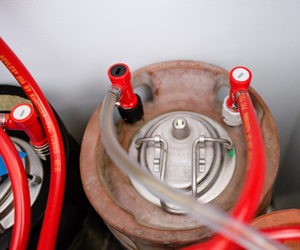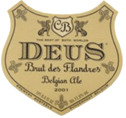The Natural Way to Carbonate
What is a German-style homebrewer to do? The poor fellow has
sworn allegiance to Reinheitsgebot, the German purity law of 1516, and called
all other brewers Schweinhunden for using ingredients other than malt, hops,
water, and yeast. What many Reinheitsgebot purists fail to realize is that they
cannot add priming sugar or extraneous CO2 to carbonate their beers. Large
commercial brewers solve this problem by harvesting the CO2 from fermentation
and reinjecting it into the beer. The small brewer, however, must carbonate
beer naturally by kraeusening.
The word “kraeusen” refers to the stage of fermentation in
which the yeast is the most active and the foam of the beer is the highest. The
brewer who kraeusens removes a portion of the fermenting beer at this point and
adds it to an aging beer to instigate a second fermentation. During the second
fermentation the yeast release CO2, which gives the beer its carbonation. The
new yeast activity also helps develop the flavor of the aging beer. The active
yeast consume the compound diacetyl (butter). Yet the fermentation does produce
some young-beer characteristics such as acetaldehyde (green apple) that will
fade with two to four weeks of aging. The fresh yeast will consume any leftover
sugars, making the beer slightly drier in taste.
The homebrewer who wishes to kraeusen beer has at least
three different ways to go about it:
• Traditional kraeusening. The fermenting beer can be
removed from a new batch at high kraeusen and mixed with the finished beer.
• Priming with wort. When the beer is initially brewed, a
portion of the wort can be set aside in sealed, sanitized bottles in a
refrigerator. Yeast can be added to the reserved wort a day prior to
kraeusening. When the yeast seems most active, make any necessary measurements
(see below) and add the fermenting beer.
• Priming with malt extract. Liquid or dried malt extract
can be added to water and boiled for 20 minutes to make a priming solution.
After cooling and transferring the wort to a large, sterilized bottle, pour in
yeast and mix. When the yeast becomes active, the solution should be added to
the beer. When you prepare the priming solution, aim for a gravity close to the
original gravity of the beer. Although malt extracts vary, one cup of dry malt
extract and one-quarter pound of domestic liquid malt extract in one pint of
beer each produce wort with a gravity of about 1.056.
For all of these methods, it’s crucial to carefully measure
the specific gravity of the kraeusen beer and the aged beer. These values can
then be used to calculate the amount of kraeusen to add.
Kraeusening at Bottling
This can be a tricky business since kraeusening is not a
process designed to produce exact carbonation levels. Traditionally, it was
practiced in wooden barrels. If carbonation was too high, pressure could be
released by venting. Unfortunately, when bottling you only have one shot at it.
The following equation can increase the accuracy of your kraeusen. It is a
simplification of George Fix’s carbonation equation found in his book, Vienna
(Brewers Publications).
K = volume of kraeusen beer in quarts
B = volume of beer in gallons
SGB = specific gravity of the beer
SGK = specific gravity of the kraeusen
P = ° Plato = (SGK-1) x 1000/4
Example: Say you have five gallons of finished beer with
specific gravity of 1.012 that you wanted to kraeusen. You make a second batch
for this purpose. At high kraeusen the gravity of the priming beer is 1.045.
K = ?
B = 5 gallons
SGB = 1.012
SGK = 1.045
P = (1.045-1) x 1000/4 = 11.25
K = 2.9 quarts of kraeusen beer
This amount will give about 2.5 volumes of CO2, the
carbonation level of most microbrews. However, results will vary depending on
the precision of measurements and the fermentability of the kraeusen beer.
Measure the volume of beer at least to the quarter gallon.
Kraeusening in a Keg
Adding kraeusen beer to aged beer in a keg is an easy and effective
way of carbonating beer. The kraeusen should be added at a rate of 10 to 20
percent of the aged beer by volume. For example five gallons of beer would
require one-half to one gallon of fermenting beer. Overcarbonating is not a big
concern since any excess carbonation can be removed by bleeding off pressure.
Kraeusening is an effective, natural way to carbonate. And
if you’re a purist, you can still swear by the Reinheitsgebot.



